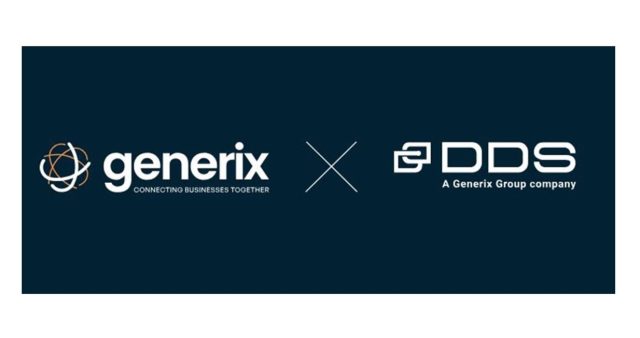
How Vendor Managed Inventory (VMI) Strengthens Supply Chain Resilience and Collaboration
To optimize inventory management, retailers and suppliers are increasingly turning to Vendor Managed Inventory (VMI) tools that transfer the responsibility…
Generix Ushers in a New Era of Intelligent Commerce for Retailers with AI-Driven Innovation Read the press release

GCR: Driving trusted collaborative replenishment in one place
GCR is a collaborative supply management system that helps manufacturers manage their customers’ inventory anywhere in the world.
Drive end-to-end replenishment process on any data with one single source of truth for higher accuracy.
Get optimized replenishment recommendations for highest customer service & lowest environmental impact.
Quickly equip any business user anywhere in the world with an automated solution.
Lowest cost-to-serve based on the reduction of risk related to shortages and overstock, is a high value service requested to key suppliers.
Consumer expectations are definitely shifting toward new consumption patterns including sustainability requirements (waste reduction).
When cost pressure increases, every business seeks to reduce inventory while increasing customer service rate and enhancing the stock-to-serve balance.
VMI involves entrusting the supplier with managing the replenishment of its customers’ inventory, minimizing stock coverage, logistics and transport costs, and maximizing the service rate to stores.
To calculate replenishment requirements and place orders for each customer warehouse, the VMI tool uses daily data on stock levels and consumption for each item.
With GCR, you drive end-to-end replenishment process on any data with one single source of truth for higher accuracy.
With GCR you get optimized replenishment recommendations for highest customer service & lowest environmental impact.
With GCR you quickly equip any business user anywhere in the world with an automated solution.
Automatic integration of EDI messages received from partners, ERP connexion for master data, ergonomics to easily and fast manage the integration issues on a daily base.
From most simple to advanced forecast models to calculate product consumption trends, stock cover calculation over the next 2 delivery dates horizon, include missing quantities to consider the store need, consider the logistics units per warehouse to round up the need.
In order to reduce the transport costs, the order proposal issued by GCR can be automatically optimized to reach full truck loads, anticipating on the next order to maintain lower customer stock cover; we also offer an advanced option for pallet layers stacking optimization.
With GCR, you can manage with efficiency the events on your products like promotion or New Product Introduction thanks to automated rules for pre-ordered quantities dispatch and use of similar product historical data.
With the Generix Supply Chain Execution portfolio:
Drive operational efficiency across warehouse activities
Optimize and organize your yard operations
Optimize workforce management across your warehouse
Unlock operational efficiency across your physical and critical workflows. Benefit from our best-of-breed SaaS solutions and expertise, backed by high-performance partners and seamless implementation and advisory support for your business journey.

To optimize inventory management, retailers and suppliers are increasingly turning to Vendor Managed Inventory (VMI) tools that transfer the responsibility…

Generix Group, a leading SaaS vendor of collaborative supply chain solutions, and DDS, a SaaS vendor of supply chain digitization…

Have you ever gone into a store and discovered the product you wanted is out of stock? Or, have you…
Give us a call 1 855 938-4562

Vendor Managed Inventory software streamlines needs assessment, supplier analysis, order management, and cost tracking. It centralizes purchasing data, optimizes processes, and enables informed decisions.
Vendor Managed Inventory software provides increased visibility into goods flow and enables effective coordination between suppliers, production, and distribution. It facilitates inventory management, delivery tracking, and production planning.
Vendor managed inventory (VMI) is a supply chain practice where the supplier assumes responsibility for managing a customer’s inventory levels. This approach allows for more efficient stock management, as suppliers can monitor inventory levels in real-time and replenish products as needed. Generix’s VMI software facilitates this process by providing advanced tools for inventory monitoring, forecasting, and replenishment, improving supply chain efficiency and reducing stockouts.
VMI software benefits businesses by enhancing inventory accuracy, reducing stockouts and overstocks, and improving supplier-customer relationships. It enables better demand forecasting and inventory optimization, leading to cost savings and more efficient supply chain operations. Generix’s VMI software streamlines these processes, offering a more responsive and adaptive inventory management approach.
Yes, Generix’s vendor managed inventory systems can seamlessly integrate with other supply chain software, including ERP systems and logistics platforms. This integration facilitates a unified approach to supply chain management, improving data accuracy and operational efficiency across the board.
Vendor managed inventory is versatile and can be adapted to various industries, from retail to manufacturing. Generix’s VMI software is customizable to meet the specific needs of different industry sectors, ensuring that businesses of all types can benefit from improved inventory management.
Key features of Generix’s VMI software include real-time inventory visibility, automated replenishment, demand forecasting, and detailed reporting and analytics. These features collectively enable effective inventory management, ensuring that stock levels are maintained optimally to meet customer demands while minimizing excess inventory.
Vendor managed inventory software positively impacts supplier-customer relationships by fostering collaboration and trust. It allows suppliers to take a proactive role in managing inventory, leading to more efficient operations and reduced stockouts. This collaborative approach enhances communication, aligns goals, and builds a stronger, more reliable partnership, ultimately benefiting both parties in terms of service quality and operational efficiency.